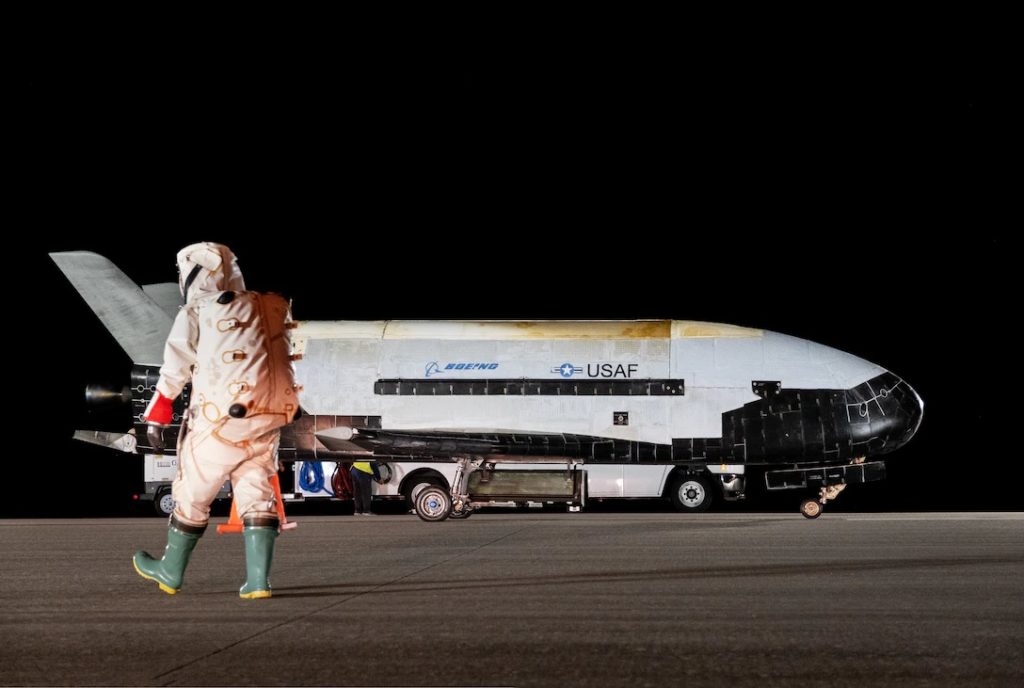The US Space Force successfully recovered its X-37B on the Orbital Test Vehicle-6 (OTV-6) mission, after it deorbited and landed at NASA’s Kennedy Space Center Shuttle Landing Facility at 1022 GMT on 12 November after a mission lasting 908 days.
OTV-6 was the first mission to introduce a service module – a ring attached to the rear of the vehicle expanding the number of experiments that can be hosted during a mission. The service module successfully separated from the OTV before landing, which is a necessary activity due to the aerodynamic forces experienced by the X-37B vehicle upon re-entry.
The OTV-6 mission hosted the Naval Research Laboratory’s Photovoltaic Radiofrequency Antenna Module. This experiment successfully harnessed solar rays outside of Earth’s atmosphere and aimed to transmit power to the ground in the form of radio frequency microwave energy. Additionally, the US Air Force Academy’s FalconSat-8, developed in partnership with Air Force Research Laboratory and deployed in October 2021, remains in orbit.
Multiple NASA experiments were deployed on OTV-6 including the Materials Exposure and Technology Innovation in Space (METIS-2) set with thermal control coatings, printed electronic materials and candidate radiation shielding materials. Another NASA experiment aims to investigate the effect of long-duration space exposure on seeds.
Post Script: After its launch in August, the Chinese equivalent of the X-37B, CSSHQ 1 Reusable Spaceplane (Flight 2), is still in orbit. Nevertheless, it appeared to have discarded its service module on 1 November at approximately 1200 GMT.









